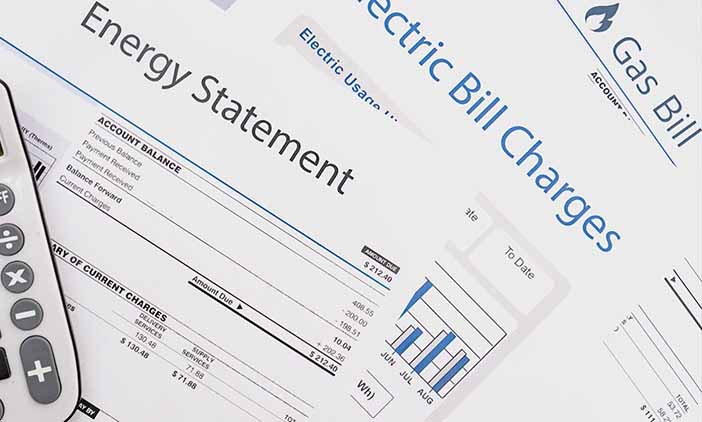Utility bills are a common sight in households and businesses worldwide. They are a record of the amount of services consumed by the customer, such as electricity, gas, and water, and the charges associated with them. Understanding utility bills can be daunting, especially for first-time homeowners or those new to a specific area. In this article, we will explore the different types of utility bills, what they include, and how to read them. You can download plenty of Utility Bill Templates files from our website.
Table of Contents
- Introduction
- Understanding Utility Bills
- Types of Utility Bills
- Billing Cycles
- Meter Readings
- Electricity Bills
- Bill Components
- Understanding Tariffs
- Water Bills
- Bill Components
- Understanding Tariffs
- Gas Bills
- Bill Components
- Understanding Tariffs
- Ways to Reduce Your Utility Bills
- Common Utility Bill FAQs
- Conclusion
- FAQs
Understanding Utility Bills

Utility Bill Examples PDF PSD
We have utility bill templates examples in PDF, PSD, Word, JPG, PNG formats.
Types of Utility Bills
Utility bills are primarily of three types – electricity bills, water bills, and gas bills. While some utility companies may combine two or more services in a single bill, it is common to receive separate bills for each.
Billing Cycles
Utility bills are issued on a regular basis, usually every month or bi-monthly, depending on the utility company. This cycle is called the billing cycle, and it determines the period for which the services are being billed.
Meter Readings
Most utility companies rely on meter readings to calculate the services consumed by the customer. A meter is a device that measures the amount of electricity, water, or gas consumed. The meter reading is then used to generate the bill. In some cases, estimates may be used if the meter is not accessible, or if the meter reading is not submitted in time.
Electricity Bills
Bill Components
Electricity bills usually contain several components, including the following:
- Fixed Charges: A flat fee charged by the utility company to maintain the electricity infrastructure, regardless of the amount of electricity consumed.
- Energy Charges: The charges associated with the amount of electricity consumed, calculated in kilowatt-hours (kWh).
- Taxes: Government taxes imposed on the consumption of electricity.
Understanding Tariffs
Tariffs are the rates charged by the utility company for the consumption of electricity. These rates may vary based on the time of day, the day of the week, or the season. Some utility companies also offer different tariff plans based on the customer’s usage pattern. It is essential to understand the tariff structure to reduce your electricity bills.
Water Bills
Bill Components
Water bills usually contain the following components:
- Fixed Charges: A flat fee charged by the utility company to maintain the water infrastructure, regardless of the amount of water consumed.
- Volume Charges: The charges associated with the amount of water consumed, calculated in cubic meters (m3).
- Taxes: Government taxes imposed on the consumption of water.
Understanding Tariffs
Water tariffs are usually structured in tiers, where the price per cubic meter increases with the amount of water consumed. Some utility companies also offer different tariff plans based on the customer’s usage pattern. It is essential to understand the tariff structure to reduce your water bills. You must also download Fake Utility Bill Templates PSD from here.
Gas Bills
Bill Components
Gas bills usually contain the following components:
- Fixed Charges: A flat fee charged by the utility company to maintain the gas infrastructure, regardless of the amount of gas consumed.
- Volume Charges: The charges associated with the amount of gas consumed, calculated in cubic meters (m3) or British Thermal Units (BTUs).
- Taxes: Government
Understanding Tariffs
Gas tariffs may vary based on the type of gas consumed, the time of day, the day of the week, or the season. Some utility companies also offer different tariff plans based on the customer’s usage pattern. It is essential to understand the tariff structure to reduce your gas bills.
Ways to Reduce Your Utility Bills
Reducing your utility bills can save you money and help the environment. Here are some tips to reduce your bills:
- Turn off lights and appliances when not in use.
- Use energy-efficient appliances and light bulbs.
- Set your thermostat to a comfortable temperature.
- Fix leaky faucets and toilets.
- Take shorter showers.
- Use a dishwasher or washing machine only when you have a full load.
Common Utility Bill FAQs
- What should I do if I receive an unusually high bill?
If you receive an unusually high bill, you should check your meter reading to ensure that it is accurate. You can also contact your utility company to ask for an explanation of the charges.
- What should I do if I cannot pay my bill on time?
If you cannot pay your bill on time, you should contact your utility company as soon as possible. Most utility companies offer payment plans or financial assistance programs for customers who are struggling to pay their bills.
- Can I switch to a different utility company?
In most areas, you can switch to a different utility company if you are not satisfied with your current service or rates. However, you should check with your local regulatory authority to ensure that you are not breaking any rules or regulations.
- Can I dispute a utility bill?
Yes, you can dispute a utility bill if you believe that it is inaccurate or unfair. You should contact your utility company to start the dispute resolution process.
- How can I estimate my utility bills before moving into a new home?
You can contact your utility company to get an estimate of the average utility bills for the area or property you are moving into. This will give you an idea of what to expect and help you budget accordingly.
Conclusion
Utility bills can be complex, but understanding them is essential to manage your expenses and reduce your carbon footprint. By understanding the different types of utility bills, their components, and the tariff structure, you can make informed decisions to reduce your bills and conserve resources. Remember to follow the tips mentioned above and reach out to your utility company if you have any questions or concerns.
